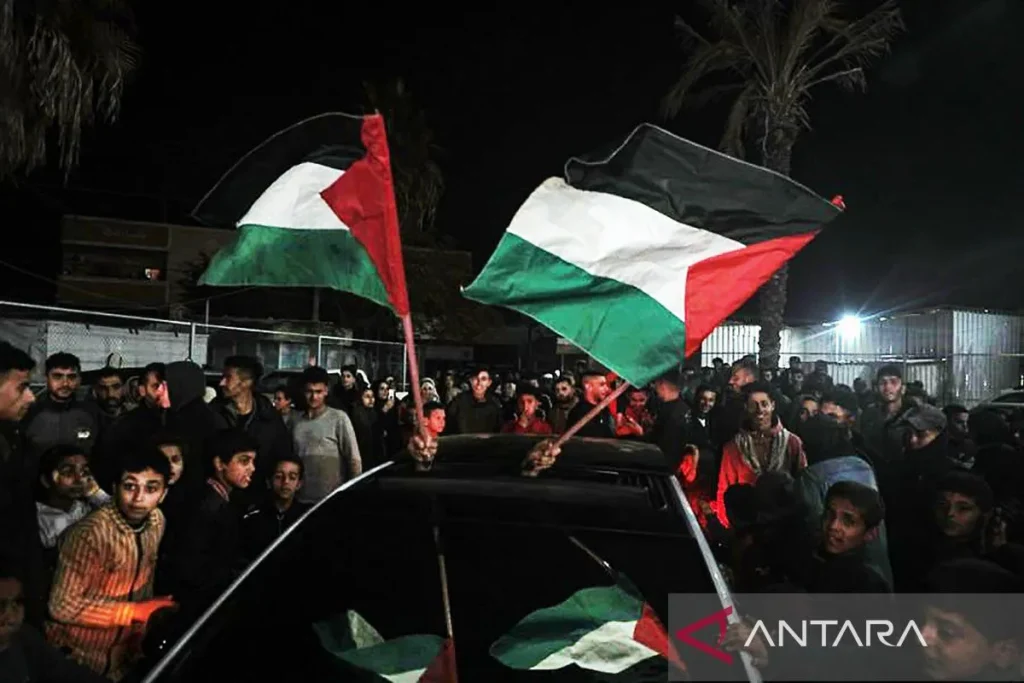
On January 15, 2025, Hamas, representing Palestine, and Israel officially agreed to a ceasefire set to commence on January 19, 2025. This agreement comes after over 460 days of brutal Israeli aggression that has resulted in the deaths of approximately 46,707 Palestinians. The announcement of the ceasefire was met with celebrations in Gaza, where residents expressed their relief and hope for a more peaceful future.
The ceasefire agreement includes several critical provisions aimed at reducing hostilities and facilitating humanitarian aid. It outlines a multi-phase approach to the ceasefire, ensuring that both parties adhere to specific commitments.
First Phase
The first phase of the agreement includes the release of 33 Israeli hostages held by Hamas in Gaza. These hostages include women, children, and elderly civilians over the age of 50. In return, Israel has agreed to release a greater number of Palestinian prisoners. Additionally, Israel will withdraw its military forces from densely populated areas in Gaza to a distance of no more than 700 meters from the border. This phase also allows civilians to return to their homes in northern Gaza, which had been previously besieged. Furthermore, Israel will open humanitarian aid routes, permitting up to 600 trucks per day to enter Gaza.
In terms of medical treatment, injured Palestinians will be allowed to leave Gaza for necessary care, and the Rafah crossing with Egypt will be opened seven days after the start of the first phase. Additionally, Israeli forces are expected to reduce their presence in the Philadelphi Corridor, the border area between Egypt and Gaza, with a full withdrawal planned within 50 days of the agreement’s enactment.
Second Phase
Should all conditions of the first phase be met, the second phase will involve Hamas releasing all surviving hostages, particularly male soldiers, in exchange for the further release of Palestinian prisoners from Israeli jails. During this stage, Israel will also initiate a full withdrawal of its military forces from Gaza.
Third Phase
If the second phase is successfully implemented, the agreement will move to the third phase, which entails the return of the remains of any remaining hostages. In return, a reconstruction plan for Gaza will be set in place, projected to last between three to five years and supervised by international authorities.
Legal Framework of the Ceasefire
The ceasefire is governed by international humanitarian law, which seeks to provide a framework for the cessation of hostilities and the protection of civilians. Key principles in this context include:
- Agreement by All Parties: A ceasefire must be accepted by all conflicting parties, typically formalized through official documents or resolutions facilitated by international mediators.
- Obligation to Comply: Once a ceasefire is agreed upon, all parties are required to adhere to it. Violations can be deemed illegal under international law and may result in sanctions or diplomatic consequences.
- Humanitarian Objectives: A primary goal of a ceasefire is to protect civilian populations, facilitate humanitarian assistance, and allow for the evacuation of war casualties.
Challenges to Implementation
Despite the strong legal foundations of the ceasefire, challenges remain regarding its implementation. Trust between the conflicting parties is often at a low, leading to skepticism about each side’s commitment to uphold the ceasefire. Additionally, past experiences have shown that ceasefires can be exploited to gain military advantages, leading to violations and renewed conflict.
In conclusion, the ceasefire agreement between Palestine and Israel marks a significant step toward reducing hostilities and addressing humanitarian needs. However, its success will depend on the commitment of both parties to adhere to the terms and the support of the international community in monitoring compliance and facilitating reconstruction efforts in Gaza.



